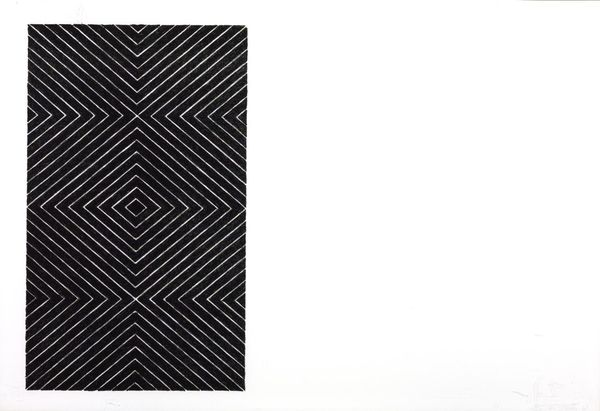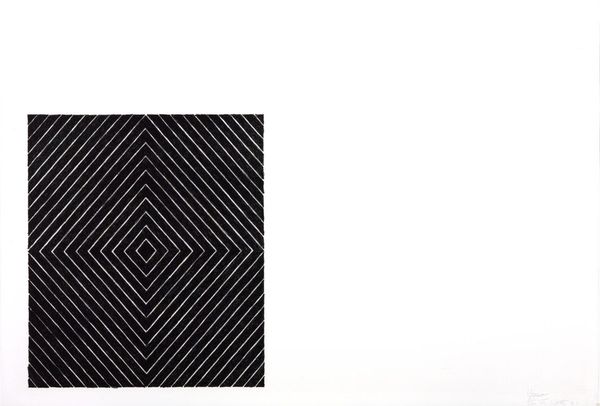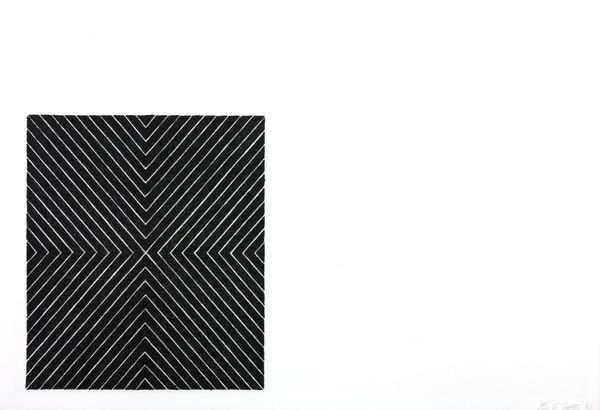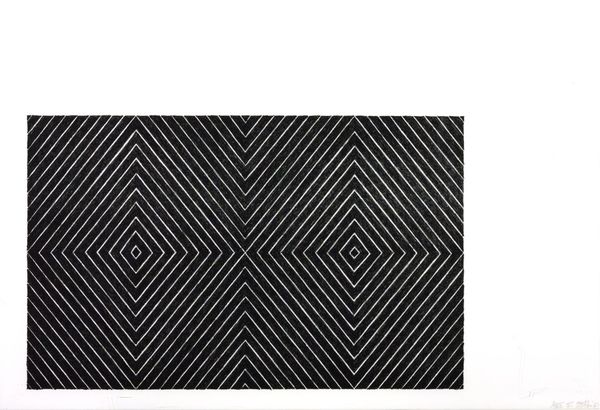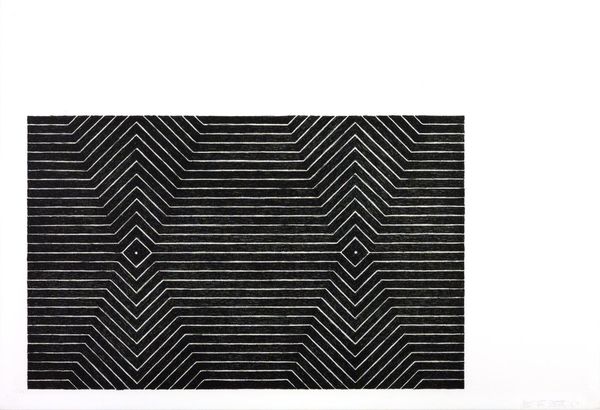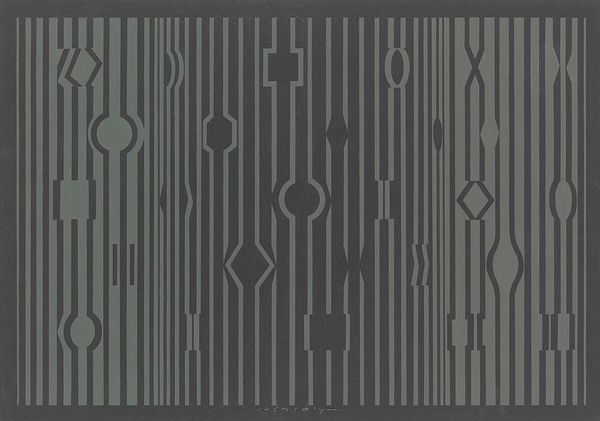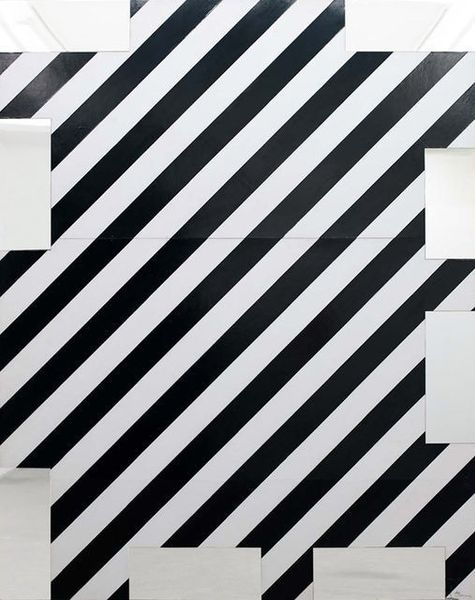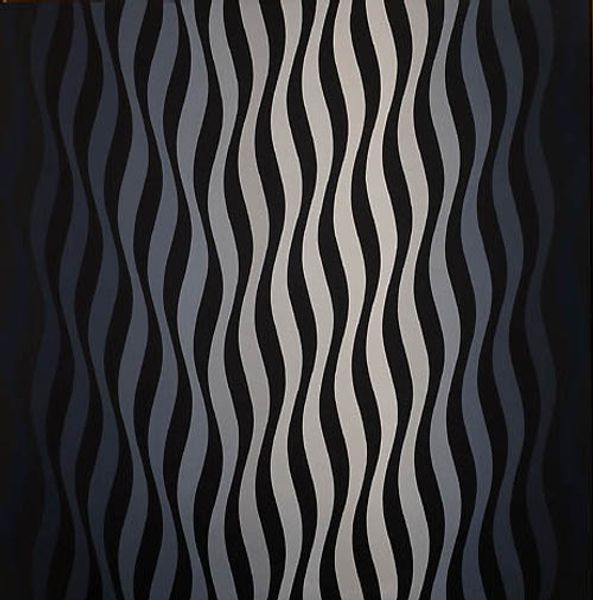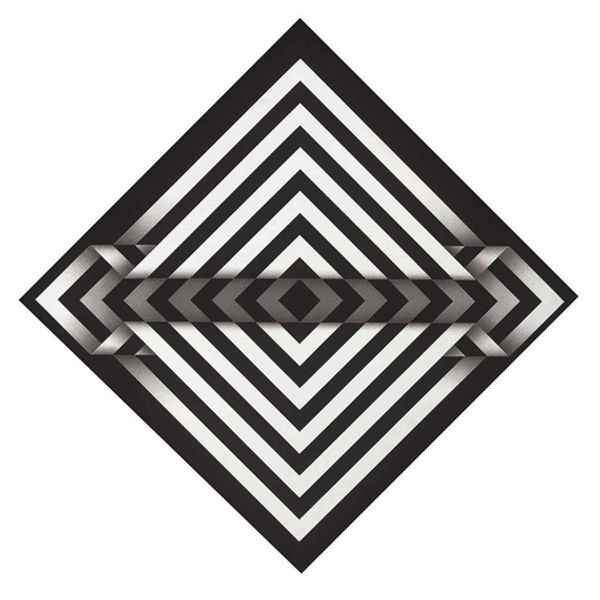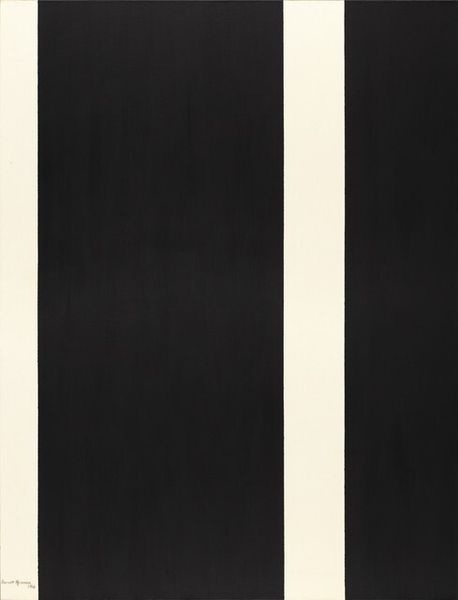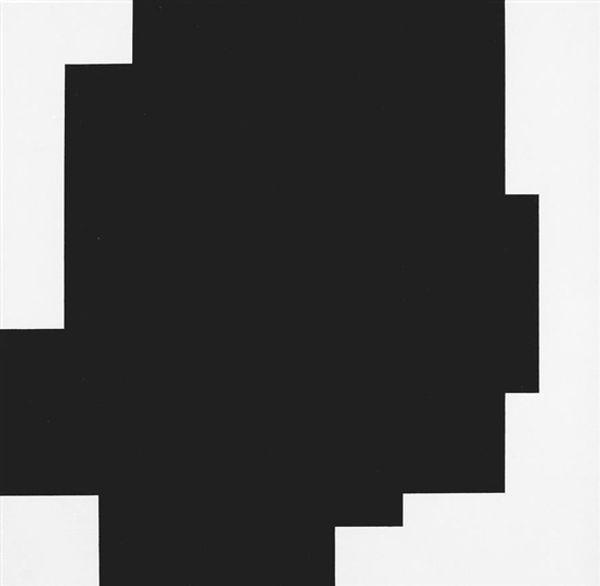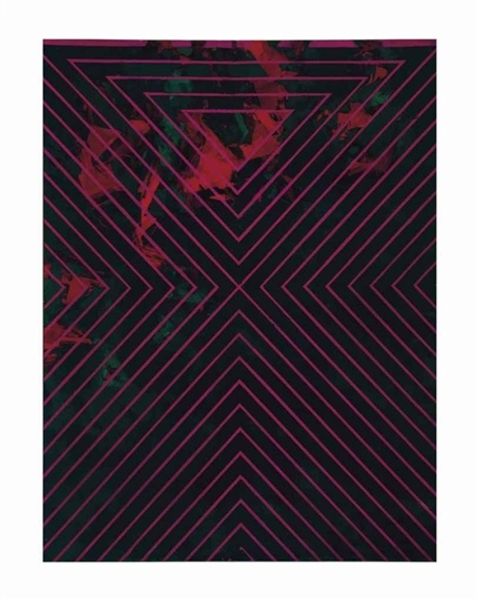![[title not known] by Frank Stella](/_next/image?url=https%3A%2F%2Fd2w8kbdekdi1gv.cloudfront.net%2FeyJidWNrZXQiOiAiYXJ0ZXJhLWltYWdlcy1idWNrZXQiLCAia2V5IjogImFydHdvcmtzLzU0NzE0YjI3LWIyZjgtNGE1Yy1iNzM0LTJmNWE4MWNhZmY2YS81NDcxNGIyNy1iMmY4LTRhNWMtYjczNC0yZjVhODFjYWZmNmFfZnVsbC5qcGciLCAiZWRpdHMiOiB7InJlc2l6ZSI6IHsid2lkdGgiOiAxOTIwLCAiaGVpZ2h0IjogMTkyMCwgImZpdCI6ICJpbnNpZGUifX19&w=3840&q=75)
Dimensions: unconfirmed: 381 x 559 mm
Copyright: © ARS, NY and DACS, London 2014 | CC-BY-NC-ND 4.0 DEED, Photo: Tate
Curator: This intriguing piece is by Frank Stella, part of the Tate Collections. The dimensions are about 381 by 559 millimeters. Editor: Striking! The stark contrast and repeating geometric shapes give it a real hypnotic quality. It feels almost like an optical illusion. Curator: Stella's work often explores the relationship between the painted surface and its support. You see that push and pull so clearly here, right? The black and white create a powerful visual tension. Editor: Absolutely. There's something primal about those diamond shapes too. They remind me of ancient patterns, like those found in textiles or ritualistic art. Maybe they speak to a deeper, universal human need for order and symmetry. Curator: Maybe. Or perhaps it is just Stella playing with depth and perception, creating something that appears to move even as it stays still. It is that ambiguity that keeps pulling you back, isn't it? Editor: Yes, exactly, it's a trick of the eye, and perhaps, a trick of the mind. Very clever.
Comments
Join the conversation
Join millions of artists and users on Artera today and experience the ultimate creative platform.
tate 8 months ago
⋮
Frank Stella's Black Series II is a portfolio of eight lithographs. They were published by Gemini G.E.L in an edition of one hundred and the Tate copy is number five. The lithographs transpose the compositions of Stella's diamond-pattern Black Paintings (1959-1960) into prints. Stella gave them the same names as the paintings they were based upon: Tuxedo Park, Gezira, Point of Pines, Zambesi, Jill, Delphine and Hippolyte, Gavotte and Turkish Mambo. The Black Series I of the same year similarly assembled twelve of his Black Paintings with rectilinear compositions. The Black Paintings (1959-1960) are Stella's most important and radical contribution to post-war abstract painting, only rivalled by the shaped canvases executed in aluminium and copper paint between 1960 and 1961. In 1967, Stella turned down Kenneth Tyler's invitation to make prints at the Gemini G.E.L. workshop in Los Angeles, stating that if he ever made a drawing he used a Magic Marker pen. However, Tyler devised a custom-made marker filled with lithographic ink that could be used to draw directly onto lithographic stones. As a result, Stella began working at Gemini G.E.L (Gilmour 2000, p.6). The two Black Series were the second suites of prints Stella created at Gemini, the first being Star of Persia I and II (1967). The Black Series II differs from Black Series I in the choice of paper and ink. While the first series was printed on buff-coloured paper in metallic black-grey ink, the second series employed bright white paper and 'the sooty richness of French Charbonnel black ink,' enhancing 'the more aggressive optical qualities inherent in the diagonal striping' (Axsom 1983, p.48). All of Stella's early prints were based on stripe paintings - conceived as so-called 'album' prints which were supposed to be assembled in binders to provide an intimate record of his early work. The Black Series II was based on the complete series of diamond-pattern Black Paintings that Stella created in 1959-60, including Gavotte of 1959 which was destroyed by the artist in 1961. The related print and sketches provide the only surviving record of the work. The prints are not illustrations of the paintings but differ significantly in detail and character. While the application of the ink with a lithographic marker recreates the free-hand quality of the paintings, the stripes in the prints are generally more clearly defined resulting in a more intensely optical diamond-pattern. Stella further changed the striped pattern and number of black bands in order to avoid the prints becoming miniature reproductions of the paintings. The images are situated off-centre, in the bottom left-hand corner of the sheets. Stella thus prevented the geometric figures assuming the object-like quality of the paintings displayed on white walls, instead 'allowing the unpainted areas between the stripes to be identified with the paper,' thus countering 'traditional figure-ground relationships' and introducing 'an element of tension as the eye moves to correct the asymmetry' (Axsom 1983, p.14). Further Reading:Pat Gilmour, 'Tyler and the Art of Collaboration,' in The Kenneth Tyler and Tyler Graphics Collection of Contemporary Prints and Multiples, Sotheby's New York, May 6, 2000Richard Axsom, The Prints of Frank Stella: A Catalogue Raisonné, 1967-1982, New York 1983, reproduced (colour) pp.48-52Frank Stella: The Black Paintings, exhibition catalogue, The Baltimore Museum of Art, Baltimore 1977 Jemima MontaguJuly 2000Revised by Imogen Cornwall-Jones April 2002
